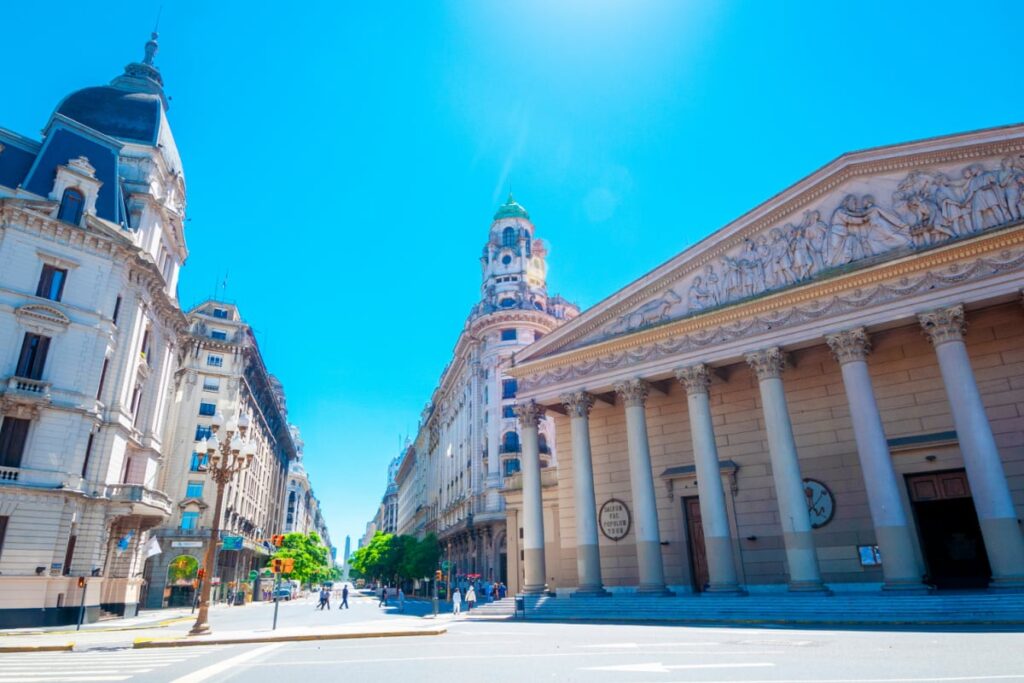Travel Guide
These Are The 4 Safest Countries In Latin America To Visit—Including A Surprising Addition!
Latin America is not the first geographical region that pops to mind when you think of a ‘safe’ destination abroad:
Although it is important not to generalize, and not everyone’s experience is the same, Latin America is often plagued by higher crime levels, including violence and corruption, than more developed countries in the Northern Hemisphere.
That’s why most of the subcontinent features at Level 2, or Level 3, on the U.S. Department of State’s Travel Advisory listings:


In less-complicated terminology, this means U.S. citizens have always been advised to either exercise greater caution, or even reconsider travel altogether to a majority of nations south of the border, due to the risks involved… except a lucky 4.
You may think you know what you’re getting into, but before you try to second-guess this, Mexico isn’t part of the quartet—in fact, it’s been beaten by a surprising country that was previously considered one of the most dangerous:
Argentina


No, it’s not Argentina, but we’ll get to that shortly.
As you might know, safety in the Hermanos homeland has never been a primary concern for American visitors, with lower-than-average crime for a South American country, especially when compared to neighboring Brazil, and rare cases of violence involving tourists.
Buenos Aires is oftentimes labelled ‘Paris of the South’, thanks to its stately architecture, leafy boulevards, and ‘European feel’, except some might argue it’s even safer than France’s capital, currently at Level 2, while BA itself is at Level 1:


In other words, Americans can exercise ‘normal’ precautions when there, as the U.S. Department of State has ruled.
The only Argentinian destination with a side note added is the city of Rosario, in the Santa Fe province, and in that case, U.S. authorities cite ‘crime’, without going further into detail.
Paraguay
Up next, we have Paraguay (still not the big new addition, so hang on for the big reveal).
A lesser-known, landlocked gem sandwiched between Brazil and Argentina, Paraguay seemingly shares the latter’s safety levels, as U.S. citizens are not urged to be cautious when traveling across its territory, with only a handful of exceptions.


They are advised to be careful when visiting untouristy departments like Amambay and Alto Paraná, which border Brazil, San Pedro, and Concepcion, due to ‘crime’.
However, when visiting Asunción, the charming colonial-era capital and main tourist destination, or Ciudad Del Este, which straddles the tripoint shared with Brazil and Argentina, within easy reach of the world-famous Iguazu Falls, no warnings apply.
By the way, you can only fly to Paraguay via a third country, as there is non nonstop commercial service offered to Silvio Pettirossi International Airport, but the good news is that connecting round-trip flights from Miami start at $505.
French Guiana


The third one (hang on, we’re nearly there) is not a country, proper, but a region in a wider, trans-continental country.
Many Americans may not know this, but French Guiana is, in fact, a part of France, not a colony, not an autonomous territory, but every bit as much a part of the European state as Paris or Marseille. Needless to say, security here is tight.
Well, tighter than it is in neighboring Northern Brazil, with which it shares a border, and where gang activity is rampant.
Unlike other parts of France, French Guiana does not have warnings for specific destinations, including the vibrant capital, Cayenne, and the Guiana Amazonian Park, the largest national park in France.


That being said, French Guiana is not exactly the most accessible destination: flights either go through other South American territories or France (this includes French islands in the Caribbean).
El Salvador
Onto the big fourth.
Not Chile, not Peru, not Ecuador: El Salvador is the fourth Level 1 ‘safe’ destination in LatAm, as of last week, and it’s not like we didn’t see it coming after President Bukele’s near-impeccable track record on tackling crime.
Since he came into power, criminals have essentially been wiped from the streets of San Salvador, the bustling capital, and safety perception levels have essentially shot to the highest they have ever been, regardless of the controversies surrounding Bukele’s unorthodox policies.


That’s quite a big feat for a small country that had historically been called the Murder Capital of Central America, and other equally dispiriting titles, and only 5 years ago.
According to an InSight Crime report from last fall, 88% of El Salvadorians feel safe in their places of residence, definitely placing it among Latin America’s least dangerous destinations to visit in 2025.
Ready For Your Trip? Check The Latest Entry Requirements For Your Destination Here
↓ Elevate Your Travel↓
Sign Up Now For Travel Off Path Premium! No ads, VIP Content, Personal Travel Concierge, Huge Savings, Daily Deals, Members Forum & More!


✈️Join Our Travel Off Path Community Forum: Where travelers unite, ask questions, share experiences and even find like-minded travel buddies!
SUBSCRIBE TO OUR LATEST POSTS
Enter your email address to subscribe to Travel Off Path’s latest breaking travel news, straight to your inbox.
This article originally appeared on TravelOffPath.com
Opinions expressed here are the author’s alone, not those of any bank, credit card issuer, hotel, airline, or other entity. This content has not been reviewed, approved or otherwise endorsed by any of the entities included within the post.

